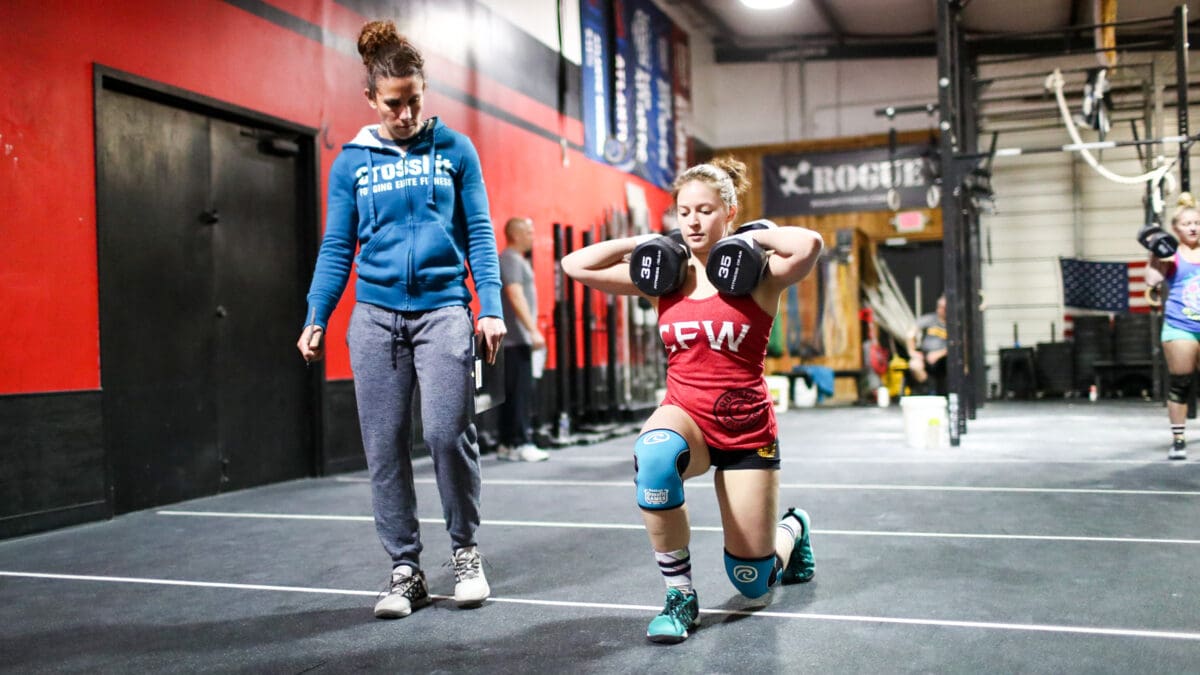Fitness
5 Positive and 5 Negative Ways AI Could Influence the Fitness Industry in the Future (Written by an AI) | BOXROX

Artificial Intelligence (AI) has become a transformative force across multiple sectors, from healthcare and education to finance and entertainment. Its rapid evolution is characterized by the development of systems capable of performing tasks that typically require human intelligence.
These tasks include decision-making, pattern recognition, speech recognition, and even translating languages. With its ability to process vast amounts of data and learn from it, AI is not just automating mundane tasks but also enhancing human capabilities and creating new opportunities for innovation.
In the fitness industry, AI’s integration promises a similarly revolutionary shift. The traditional approach to fitness, which often involves generic workout plans and one-size-fits-all guidance, is being challenged by AI technologies that offer customization and precision previously unavailable.
For fitness enthusiasts and professionals alike, AI presents opportunities to enhance how workouts are planned, executed, and monitored. These advancements could lead to more effective training sessions, improved results, and higher satisfaction.
However, as with any technological integration, there are potential drawbacks that need careful consideration, such as privacy concerns and the impact on employment within the industry.
This article explores both the positive and negative ways through which AI could influence the fitness industry, shedding light on how it might reshape fitness experiences, professional roles, and even business models.
As we delve into these aspects, it becomes clear that the future of fitness will likely be marked by a blend of human expertise and AI innovation, potentially leading to a healthier and more inclusive society.
Potentially Positive Impacts of AI
Let’s start with the potential pros of the integration of AI technology into the fitness sphere.
1. Personalized Workout Plans
One of the most significant positive impacts of AI in the fitness industry is its capacity to create highly personalized workout plans. This customization goes beyond the capabilities of even the most experienced trainers, as AI systems can analyze a vast array of data points to tailor workouts precisely to an individual’s needs. These systems take into account not just basic metrics like age, weight, and fitness level, but also more nuanced information such as past injuries, personal goals, genetic conditions, and even daily energy fluctuations.
AI-driven fitness platforms start by gathering initial data from users, which might include their physical health assessments, dietary preferences, and long-term fitness goals. This data is continuously updated with real-time performance feedback collected during workouts through wearable technology and other IoT (Internet of Things) devices.
Using machine learning algorithms, the AI can quickly adjust exercise routines not only to optimize the effectiveness of each workout but also to avoid the monotony that often leads to diminished motivation.
For example, if a user is progressing faster than expected in their cardiovascular strength, the AI can adapt their program to include more intense cardio sessions and perhaps less focus on areas where they are already excelling.
Conversely, if the AI detects signs of overtraining or fatigue, it can suggest lighter workouts or rest days to prevent burnout and injuries. This dynamic adjustment helps maintain an optimal balance that is challenging yet sustainable.
Moreover, AI’s ability to integrate and analyze data from various sources allows for unprecedented synchronization between different aspects of health and fitness. For instance, it can suggest changes in nutritional plans based on workout intensity and recovery needs, or even adjust sleep schedules to improve overall wellness and performance outcomes.
Through these personalized workout plans, AI not only enhances the efficiency and enjoyment of fitness routines but also contributes to more sustainable health habits and better overall fitness outcomes. This level of personalization, once a futuristic dream, is now becoming a reality with AI in the fitness industry, making workouts more engaging and tailored than ever before.
2. Enhanced Performance Tracking
The utilization of AI in wearable technology and mobile applications represents a major leap forward in performance tracking within the fitness industry.
These devices and apps are equipped with sensors and software that can gather and interpret a wide range of physiological data in real time. This capability allows for a level of monitoring that is both granular and comprehensive, providing insights that were previously accessible only in high-end sports laboratories.
AI-powered wearables and apps can track metrics such as heart rate, pace, calorie expenditure, movement patterns, and even sleep quality. By analyzing this data, AI systems can offer instant feedback to users, helping them understand whether they are within their target intensity zone, if they need to push harder, or if they should slow down to prevent overexertion. This kind of immediate response is crucial for both maximizing workout effectiveness and minimizing the risk of injury.
Beyond immediate feedback, AI’s role in performance tracking extends to long-term progress analysis. The AI algorithms can identify trends and patterns over time, which can be pivotal for adjusting training programs.
For example, if the data shows a plateau in strength gains or a gradual decrease in stamina, the AI can recommend changes to the workout regimen to address these issues, such as introducing new exercises, altering rest periods, or modifying workout frequencies.
Additionally, enhanced performance tracking through AI helps in setting realistic and personalized goals. By understanding an individual’s unique body responses and recovery times, AI can set benchmarks that are challenging yet achievable. This tailored goal-setting encourages consistent effort and helps maintain motivation by providing clear and reachable targets.
For coaches and trainers, the data collected and interpreted by AI offers a valuable tool for managing their clients more effectively. They can use insights provided by AI to fine-tune their coaching strategies, ensuring that each client receives the most appropriate advice and support based on their specific performance data.
In summary, AI-enhanced performance tracking transforms the fitness experience by providing detailed insights into physical activities, empowering users with knowledge previously reserved for elite athletes, and personalizing the fitness journey in real-time. This technology not only supports individual fitness goals but also enriches the overall approach to health and wellness.
3. Virtual Coaches and Motivation
AI-powered virtual coaches represent a groundbreaking development in the fitness industry, offering personalized guidance and motivation without the physical presence of a human trainer. These virtual trainers use AI to simulate the experience of having a personal coach, providing users with real-time feedback, encouragement, and expert advice tailored to their fitness journey.
The core appeal of virtual coaches lies in their accessibility and convenience. Users can interact with their AI coach through their smartphones or other smart devices at any time and place, making it easier to maintain a fitness regimen despite a busy schedule.
This is particularly beneficial for those who may feel intimidated by gym environments or those who prefer the privacy of their homes for workouts.
AI virtual trainers are equipped with sophisticated algorithms that allow them to analyze user performance, adapt workout plans, and even respond to user feedback in conversational language.
They can guide users through exercises with step-by-step instructions, correcting forms and suggesting adjustments just like a human trainer would. For instance, if a user is performing a squat, the virtual coach can ensure they maintain the correct posture, thereby enhancing the exercise’s effectiveness and reducing the risk of injury.
Related: 5 Worst Supplements Everyone Takes For Muscle Growth
Moreover, virtual coaches are designed to motivate users by setting goals, providing positive reinforcement, and celebrating milestones.
They can also employ psychological strategies to boost motivation, such as setting short-term challenges and providing visual representations of progress. This personalized encouragement helps sustain user engagement and commitment to fitness goals.
Additionally, virtual coaches can integrate with other health and wellness apps, providing a holistic approach to fitness. They can recommend nutritional adjustments based on workout intensity, suggest meditation for recovery days, or even remind users to stay hydrated.
Despite the lack of human interaction, AI coaches can simulate a supportive and interactive relationship.
They learn from user interactions, becoming better at predicting needs and preferences, which enhances the user experience over time. This dynamic interaction helps to forge a bond between the user and the virtual coach, adding a layer of personal connection that is vital for maintaining long-term fitness commitment.
In conclusion, AI-powered virtual coaches are transforming the fitness industry by making personalized training more accessible and engaging. They offer a blend of convenience, customization, and motivation that can make fitness a more integrated and enjoyable part of daily life.
4. Injury Prevention and Rehabilitation
AI’s role in injury prevention and rehabilitation in the fitness industry is becoming increasingly significant, leveraging advanced predictive analytics and biomechanical simulations to minimize the risk of injuries and aid in effective recovery.
This proactive approach not only enhances safety but also improves the overall effectiveness of fitness routines.
Injury Prevention through Predictive Analytics
AI systems can analyze extensive data from a user’s past workouts, including movement patterns and exertion levels, to identify potential risk factors for injury. By integrating biomechanical research and historical injury data, AI can predict which exercises may lead to injury based on individual risk profiles.
Read Also: 10 Worst Testosterone Killers You Should Avoid
For instance, if a user has a history of knee pain, the AI can suggest modifications to lower-body workouts or recommend specific strengthening exercises that stabilize the knee without undue stress.
This capability extends to real-time feedback during workouts. Wearables equipped with sensors can monitor movements and provide instant corrections on form, reducing improper techniques that often lead to injuries. For example, if a runner’s form begins to deteriorate during a session, the AI can suggest adjustments in stride or posture to prevent strain or overuse injuries.
AI in Rehabilitation Programs
AI is equally transformative in the realm of rehabilitation, where personalized recovery programs are crucial for effective healing. AI-driven platforms can design rehabilitation routines that adapt to the evolving capabilities of an individual recovering from injury.
By continuously assessing the user’s progress and pain levels, the AI can adjust exercises in real-time, ensuring they are neither too easy nor too intense, which can either slow down recovery or exacerbate the injury.
Furthermore, AI can facilitate remote rehabilitation, allowing patients to perform prescribed exercises at home while still under the supervision of a healthcare provider. This is particularly advantageous for those who might find frequent visits to a physical therapist challenging.
Virtual reality (VR) and augmented reality (AR) technologies powered by AI can create immersive environments where patients perform therapeutic exercises that are both engaging and precisely calibrated for their rehabilitation needs.
Enhancing Communication Between Professionals and Patients
AI also enhances the communication between healthcare providers and patients. Through platforms that integrate AI, therapists can receive accurate, up-to-date reports on a patient’s adherence to their regimen and progress, allowing for timely adjustments to the treatment plan.
This ongoing interaction ensures that patients receive personalized attention and support throughout their recovery process.
In conclusion, AI’s contributions to injury prevention and rehabilitation represent a significant advancement in the fitness and healthcare industries.
By providing personalized, data-driven insights and recommendations, AI not only helps prevent injuries but also supports faster and more effective recovery, ultimately leading to safer and more sustainable fitness practices.
5. Accessibility and Inclusivity
AI is playing a crucial role in making fitness more accessible and inclusive, particularly for individuals with disabilities and those living in remote areas. By leveraging adaptive programs and virtual reality (VR) technologies, AI is breaking down barriers that have traditionally made it difficult for certain populations to participate in fitness activities.
Adaptive Fitness Programs
AI-powered systems are uniquely capable of creating adaptive fitness programs that cater to the needs of individuals with disabilities. These programs consider various physical limitations and design workout routines that are both safe and effective. For instance, AI can modify exercises for wheelchair users, adapting traditional movements to be performed with upper body strength or through the use of assistive equipment.
Moreover, AI’s ability to continuously learn and adjust programs based on user feedback and progress ensures that these workouts remain appropriate as the individual’s capabilities evolve. This personalization is vital for encouraging consistent physical activity, which can significantly enhance quality of life for people with disabilities.
Virtual Reality for Immersive Experiences
Virtual reality, powered by AI, opens up new possibilities for inclusive fitness by creating immersive, interactive environments that can simulate various physical activities. For people living in remote areas where gym facilities might be scarce or nonexistent, VR can provide a virtual gym experience right at home.
Users can engage in a range of activities, from yoga classes to cycling through virtual landscapes, all tailored to their fitness level and preferences.
For those with mobility limitations or other disabilities, VR can be particularly transformative. It allows them to participate in virtual sports and activities that might be inaccessible in the real world. VR environments can be designed to accommodate their specific needs, providing a safe space where they can explore physical activity without the risk of injury.
Enhancing Motivation and Participation
AI and VR not only make fitness more physically accessible but also help to enhance motivation. By creating engaging and varied workout environments, these technologies help maintain interest in fitness routines. This is particularly important for those who may feel isolated due to disabilities or geographical location.
The interactive nature of AI-driven fitness programs can foster a sense of community and belonging, even in virtual settings, by connecting users with others who have similar challenges and goals.
In addition, AI can provide real-time encouragement and adjustments during workouts, further enhancing the experience by making it feel more personalized and supported. This ongoing interaction helps users stay committed to their fitness goals, ensuring they get the most out of their workouts.
In conclusion, AI’s impact on accessibility and inclusivity in fitness is profound, offering revolutionary changes that empower all individuals, regardless of physical ability or location, to participate in and benefit from regular physical activity. By addressing unique needs through adaptive programming and immersive technologies, AI is helping to create a more inclusive fitness culture that is supportive, engaging, and accessible to everyone.
Potentially Negative Impacts of AI on the Fitness Industry
Now for the cons.
1. Loss of Personal Touch
As AI continues to permeate the fitness industry, one significant concern is the potential decline in the demand for human trainers and the consequent impact on personal interaction.
While AI offers numerous advantages in terms of personalization and accessibility, it lacks the human element that is fundamental to many training relationships.
Diminished Demand for Human Trainers
The efficiency and scalability of AI-powered fitness programs and virtual coaches mean that gyms and individuals may increasingly opt for these technological solutions over traditional personal trainers.
AI can handle multiple clients simultaneously, offering customized guidance and feedback without the logistical and financial constraints associated with human trainers.
This shift could lead to a decrease in job opportunities for fitness professionals, fundamentally changing the landscape of the industry.
The transition may be particularly challenging for trainers who rely on personal rapport and hands-on guidance as key components of their coaching style. While AI can adjust workouts based on algorithms and data, it cannot replicate the motivational boost that often comes from the empathy, encouragement, and accountability provided by a human coach. The personal connection forged between a trainer and a client is instrumental in keeping clients engaged and committed to their fitness goals.
Impact on Personal Interaction
The lack of personal interaction can also affect the overall training experience. For many, the social aspect of fitness routines — whether it’s a shared struggle or communal triumph — plays a crucial role in their motivation and enjoyment.
AI, no matter how advanced, lacks the capability to genuinely empathize with human emotions and cannot modify its behavior based on emotional cues in the way a human trainer can.
Furthermore, human trainers often provide a level of holistic guidance that AI might overlook. They can sense when a client is having a bad day, offering a listening ear or adjusting the intensity of the workout accordingly.
They might also provide lifestyle and wellness advice that extends beyond physical fitness, such as stress management techniques or nutritional counseling, which are tailored not just to the client’s physical needs but also to their emotional and mental health.
The Hybrid Approach
To address these concerns, a hybrid model where AI and human trainers work in tandem might be the most effective approach. In this model, AI could handle data analysis and routine customization, while human trainers focus on providing emotional support, motivation, and lifestyle coaching.
This combination could leverage the strengths of both AI and human interaction, ensuring that the fitness industry does not lose the personal touch that is so valuable to many clients.
In conclusion, while AI brings transformative potential to the fitness industry, preserving the human element is crucial. Balancing technological advancements with the irreplaceable benefits of human interaction will be key to maintaining a personal touch in fitness experiences.
2. Data Privacy Concerns
As AI becomes increasingly integrated into the fitness industry, concerns about data privacy have surfaced prominently.
The collection, storage, and analysis of personal health and fitness data by AI systems raise significant questions regarding user privacy and data security.
Sensitive Data Collection
Fitness AI systems collect a wide array of data, from basic personal information like age and weight to more sensitive data such as medical history, daily activity levels, and biometric data.
This data is essential for customizing fitness programs and tracking progress, but it also poses privacy risks if not handled properly. Users must trust that their intimate details are safe and that their privacy is respected, which is not always guaranteed.
Vulnerabilities to Data Breaches
The more data that is collected, the larger the target it becomes for potential breaches. Despite advances in cybersecurity, no system is entirely immune to attacks. If an AI system in the fitness industry is compromised, sensitive personal information could be exposed or misused.
The consequences of such breaches go beyond mere privacy violations—they can lead to identity theft, financial fraud, and significant personal and professional repercussions for the affected individuals.
Inadequate Data Handling and Consent
Another concern revolves around how data is handled and shared by organizations. Users often have little control over or insight into what happens with their data once it’s collected.
For example, fitness data could be shared with third parties like insurers or advertisers without explicit consent from users, leading to potential misuse. Additionally, there is the concern of data being used for purposes other than those originally intended, a practice known as function creep.
Regulatory Compliance and Ethical Practices
Compliance with data protection laws, such as the General Data Protection Regulation (GDPR) in the EU or the California Consumer Privacy Act (CCPA) in the US, is crucial. These regulations mandate that organizations take specific measures to protect personal data and uphold the rights of individuals.
However, ensuring compliance can be challenging as technology and data use practices evolve rapidly.
Moreover, ethical considerations must guide the deployment of AI in fitness. Organizations should prioritize transparency with users about what data is collected and how it is used. They should also provide users with easy-to-use tools to control their personal information, including opting out of data collection or requesting the deletion of their data.
Building Trust Through Robust Data Governance
To mitigate these concerns, robust data governance policies must be implemented. This includes secure data storage practices, regular audits, and clear user agreements that explain data use in straightforward terms.
Moreover, employing advanced encryption methods during data transmission and storage can help protect data from unauthorized access.
In conclusion, while AI has the potential to transform the fitness industry by providing more personalized and accessible services, it also introduces significant data privacy risks. Addressing these concerns through stringent security measures, ethical data handling practices, and compliance with data protection laws is essential for protecting users and maintaining trust in AI-driven fitness solutions.
3. Over-Reliance on Technology
The integration of AI into fitness routines offers numerous benefits, including personalized workout plans and enhanced tracking capabilities.
However, an emerging concern is the potential for users to become overly dependent on technology, which can undermine self-motivation and awareness. This over-reliance on AI can shift the way individuals engage with their own health and fitness, sometimes to their detriment.
Diminished Self-Motivation
One of the critical challenges with increasing reliance on AI is the possible erosion of self-motivation. When fitness enthusiasts rely heavily on technology to dictate every aspect of their exercise routine, they may lose the intrinsic motivation to understand their own bodies and the fundamental principles of health and fitness.
This shift can lead to a scenario where individuals exercise only when prompted by technology, without internal motivation or understanding the reasoning behind certain workouts or health recommendations.
Reduced Self-Awareness
AI-driven devices and programs are designed to monitor progress and suggest optimizations, but this can sometimes result in a disconnect between users and their own physical sensations.
For example, an individual might continue to push through a workout as recommended by an AI coach, even when they feel pain or discomfort, potentially leading to injury or burnout.
The ability to listen to and interpret one’s own body’s signals is crucial for safe and effective exercise, and over-reliance on technology can impair this self-awareness.
Potential for Misguided Trust
Another risk of over-dependence is placing misguided trust in technology. While AI algorithms are powerful, they are not infallible and can make errors or offer suboptimal advice based on incomplete data inputs.
Users who depend solely on AI for fitness guidance might not question or critically evaluate the advice given, which could lead to inappropriate training regimens that do not consider all personal health factors and contexts.
Lack of Adaptability and Creativity
Over-reliance on technology can also stifle creativity and adaptability in developing fitness routines. AI systems typically generate recommendations based on data and predefined algorithms, which may not always capture novel or unorthodox methods of training that could be beneficial. Individuals relying heavily on AI might miss out on exploring diverse training styles and disciplines that could enhance their overall fitness and enjoyment.
Balancing Technology and Personal Engagement
To combat the risks of over-reliance on technology, it’s essential to promote a balanced approach to fitness that integrates AI tools without becoming dependent on them. Educating users about the mechanics of their workouts and the reasons behind certain fitness recommendations can help maintain a level of engagement and personal responsibility.
It’s also beneficial for users to periodically “unplug” from technology-driven workouts and engage in activities that require self-guidance and intuitive movement, such as freeform dancing, hiking, or team sports. This can help maintain a healthy balance between using AI for enhancement and cultivating personal motivation and body awareness.
In conclusion, while AI has the potential to significantly improve how we approach fitness, it’s important for users to remain actively involved in their health and fitness journeys. By doing so, they can enjoy the benefits of technology while also preserving their self-motivation, awareness, and the joy of personal achievement in their fitness goals.
4. Economic Impact on Trainers
The rapid integration of AI into the fitness industry, while offering numerous benefits to users, presents significant challenges for fitness professionals. The economic impact on trainers, particularly concerning employment opportunities, is a crucial issue that deserves attention. As AI technologies continue to advance, they could potentially replace certain functions traditionally performed by human trainers, leading to shifts in job availability and the nature of fitness professions.
Reduction in Demand for Traditional Training Services
AI-powered fitness apps, virtual coaches, and personalized workout programs can provide many of the services that human trainers traditionally offer, but at a fraction of the cost and with greater flexibility for users.
As a result, fitness facilities and individuals might opt for these technological solutions rather than investing in the services of personal trainers. This trend could lead to a reduced demand for human trainers, particularly for those whose offerings are more generalized and not specialized.
Shift Towards Specialized and High-Value Services
The potential displacement of routine training tasks by AI means that trainers may need to shift their focus to areas where they can provide additional value that AI cannot replicate.
This could include specialized training for specific populations, such as elderly clients, athletes, or individuals with special medical needs. Trainers might also need to enhance their skills in areas like injury rehabilitation, nutrition counseling, or psychological aspects of motivation and behavior change, where personal interaction and human empathy are crucial.
Need for New Skills and Adaptability
To remain competitive and relevant in an AI-dominated market, fitness professionals will likely need to adapt by acquiring new skills that complement AI capabilities. This might include learning to use AI tools to enhance their training programs or developing expertise in managing and interpreting the data generated by AI fitness platforms.
Additionally, trainers might need to focus on building and maintaining strong client relationships and creating unique, personalized experiences that technology alone cannot provide.
Opportunities in Tech-Enabled Fitness Solutions
While AI poses challenges to traditional roles, it also opens up new opportunities in the fitness industry. Trainers who can integrate AI into their services effectively can offer enhanced experiences to their clients, combining the best of technology with personal touch. There could also be new job roles in designing, managing, and improving AI fitness systems, providing avenues for trainers to transition into tech-oriented positions within the industry.
Potential for Market Expansion
AI can also expand the market by making fitness more accessible to wider demographics, potentially increasing the overall demand for fitness services, including those provided by human trainers. As more people gain access to personalized fitness through AI, the awareness and value of maintaining physical health could rise, possibly leading to a greater overall investment in personal training services.
In conclusion, while AI poses significant challenges to the economic prospects of fitness professionals, it also presents opportunities for adaptation and growth. Trainers who can innovate their services to leverage AI, focus on specialized areas, and enhance their relational skills will be better positioned to thrive in this new landscape.
The future of fitness training will likely depend on a collaborative relationship between AI advancements and the irreplaceable human elements of coaching and personal interaction.
5. Misleading or Inaccurate AI Recommendations
Possibility of errors in AI algorithms leading to inappropriate fitness recommendations and the dangers thereof.
While AI holds tremendous potential for enhancing the fitness industry through personalized training and detailed performance tracking, there remains a significant risk associated with errors in AI algorithms. These inaccuracies can lead to misleading or inappropriate fitness recommendations, which can be potentially harmful to users.
Errors in AI recommendations can stem from various sources, including biased data sets, insufficient data, and flaws in algorithm design. If the data used to train an AI system is not diverse enough or if it contains historical biases, the AI’s recommendations can perpetuate these biases, leading to inappropriate advice for certain groups of people. Additionally, AI systems that have been trained on limited or unrepresentative data may struggle to accurately predict the needs and responses of a broader user base.
Consequences of Inaccurate Recommendations
The impact of misleading AI recommendations can be significant. For individuals, following inaccurate workout advice could lead to ineffective training, lack of progress, or worse, injuries.
For instance, an AI system might recommend an overly intense workout to someone with a heart condition or a poorly suited exercise regimen for a beginner, risking their health and safety.
Impact on Trust and Adoption
Inaccurate or harmful recommendations can also erode trust in AI-driven fitness solutions. Users who experience or hear about negative outcomes are less likely to rely on these technologies, which can impede the adoption of potentially beneficial AI innovations across the fitness industry.
Legal and Ethical Implications
There are also legal and ethical implications to consider. Fitness companies relying on AI technologies must ensure that their systems are not only effective but also safe. Failure to do so could result in legal liabilities, especially if users are injured following AI-generated advice. Ethically, it is imperative that companies invest in robust testing and validation of AI algorithms to prevent harm and ensure that all users have positive and safe experiences.
To mitigate these risks, it is crucial for AI systems to undergo rigorous testing and continuous validation against a wide variety of scenarios and user profiles. Incorporating feedback loops where user experiences can inform and refine AI models is essential. Additionally, transparency about the limitations and capabilities of AI fitness recommendations can help users make informed decisions about their use.
Human Oversight
Maintaining a level of human oversight is another critical factor in safeguarding against AI errors. Fitness professionals can play a vital role in monitoring AI recommendations and intervening when necessary to correct potentially harmful advice.
Their expertise can help bridge the gap between AI capabilities and the nuanced realities of individual fitness needs.
In conclusion, while AI offers exciting opportunities for personalization and efficiency in fitness training, it is essential to address the potential risks of misleading or inaccurate recommendations. By investing in data integrity, algorithmic transparency, ongoing testing, and human oversight, the fitness industry can leverage AI’s benefits while minimizing its drawbacks.
Conclusion
The integration of Artificial Intelligence (AI) into the fitness industry heralds a transformative era marked by significant advancements and complex challenges. The potential benefits of AI, including personalized workout plans, enhanced performance tracking, virtual coaches, improved injury prevention, and greater accessibility, promise a future where fitness solutions are more effective, engaging, and inclusive than ever before.
However, these advancements come with notable drawbacks that cannot be overlooked, such as the potential loss of personal touch in training, privacy concerns, the risk of over-reliance on technology, economic impacts on trainers, and the possibility of misleading or inaccurate AI recommendations.
To harness the full potential of AI in the fitness industry while mitigating its risks, a balanced approach is essential. This approach should emphasize the collaboration between human expertise and technological advancements. Integrating AI tools should not mean replacing human trainers but rather enhancing their capabilities and extending their reach.
Human trainers can provide the empathy, ethical judgment, and personalized care that AI is currently unable to replicate, ensuring that the fitness journey remains safe, effective, and human-centric.
Future Prospects
Looking ahead, the future directions of AI in the fitness industry seem poised for further innovation. We can expect AI to become more sophisticated with advancements in machine learning algorithms, leading to even more personalized and adaptive fitness programs.
Integration with other emerging technologies such as augmented reality (AR) and the Internet of Things (IoT) could create more immersive and interactive fitness experiences. Moreover, as research in AI and human biomechanics deepens, injury prevention and rehabilitation may see groundbreaking developments.
However, the long-term success and sustainability of AI in fitness will heavily depend on addressing the ethical and practical challenges that accompany these technologies. This includes stringent data protection measures, fostering digital literacy among users, and ensuring inclusivity so that benefits of AI in fitness are accessible to all segments of the population.
In summary, while AI’s impact on the fitness industry is largely positive and full of potential, it is crucial to navigate this technological integration with caution and conscientious planning.
By doing so, the fitness industry can look forward to a future where technology enhances human health and wellness without compromising the values and personal interactions that define it.










